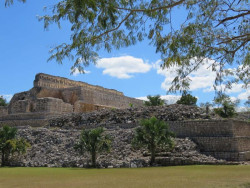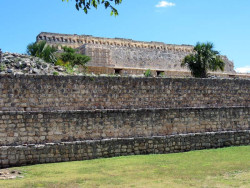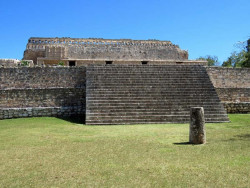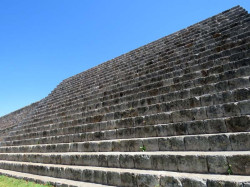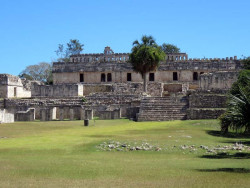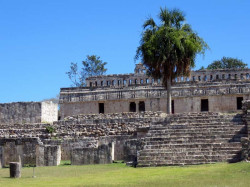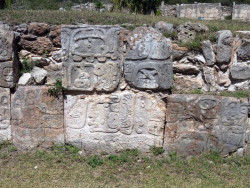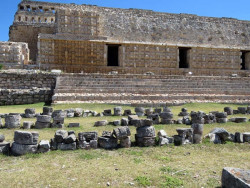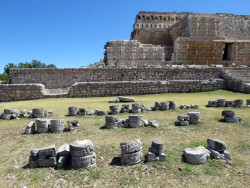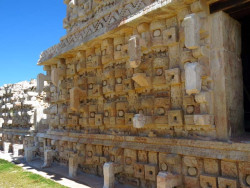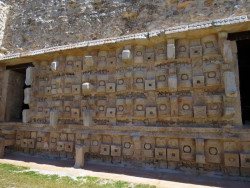- You are here:
- Home
- Man-made
- Archeological Sites
- Kabah in Mexico
Kabah in Mexico
The Pre-Columbian Mayan Site of Kabah in Mexico
Kabah is a Mayan archaeological site, located in the state of Yucatán, Mexico. Southeast of the ruins of Uxmal, Kabah is part of the Puuc route.
It has been determined that the area was inhabited in the middle of the 3rd century B.C., but most of the architecture currently visible at Kabah was built in the 7th and the 11th centuries. Above a door of one of its buildings, the date 879 is engraved, probably during the peak of the city. Another recorded date is from the classic Mayan era, 987. Kabah was abandoned or, at least any further construction, several centuries before the Spanish conquerors arrived in Yucatan. The lack of water sources at Kabah forced the use of collecting rainwater.
The name "Kabah", or "Kabaah", probably comes from ancient Mayan and means "strong hand". It is believed its name is associated with its entrance, where a sculpture represents a man holding a snake in his hand. An alternate name is "Kabahuacan", or "Kingsnake in the Hand".
The first detailed report on the site was published by John Lloyd Stephens and Frederick Catherwood, in 1842.
The excavated area at Kabah occupies an area of 1.2km² and runs from north to south. Its buildings were connected by roads. An elevated pedestrian path, or "sacbé", 18 km long and 5 meters wide, with arches at both ends, connected Kabah with the major Mayan archaeological site of Uxmal. Kabah's buildings are grouped into separate sets of buildings, one located to the east and the other to the west of the main north-south axis. On the walls of several rooms are paintings made with red handprints. For this reason, this complex receives the Mayan name of Dzalkabilkik, which means "place of blood hands."
Many of Kabah's structures are rarely visited or are still covered by jungle. It is estimated that the many mounds around them are constructions that have not yet been excavated. In 2003, a program was underway to clean and restore more buildings and archaeological excavations.
Kabah was declared a state park of Yucatán in 1933.
Photographed in 2024.
















































